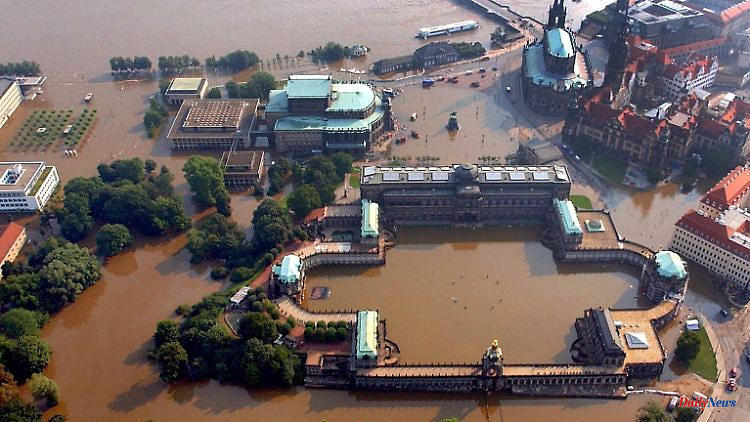The disaster in the Ahr Valley is still clearly remembered: floods can devastate entire regions, destroy places and cost many lives. Because of the climate crisis, the risk of flooding will probably increase. A study is now determining which protective measure is the most efficient.
According to an EU study, retention areas are the most cost-effective method of reducing potential future damage from river floods. In the European Union and Great Britain, flood damage could increase to an estimated around 44 billion euros per year by the end of this century, the researchers write with a view to climate change. Retention areas could reduce this amount to around 8.1 billion euros, as calculated by the team led by Francesco Dottori from the EU Commission's Joint Research Center at the Ispra site in Italy. The number of people affected by flooding would then be around 80 percent lower than without flood protection.
The experts assumed that the global temperature would rise by three degrees Celsius by 2100. According to climate researchers, this happens if climate protection is not significantly strengthened. For Germany, they calculated an average of 383 million euros in required annual expenditure from 2020 to 2100 for the retention areas. The cost-benefit ratio is around one to four euros.
According to the analysis, river floods in the EU and Great Britain currently cause an estimated 7.6 billion euros in damage every year. About 166,000 people are exposed to them each year. The researchers understand retention areas to be areas or basins in or on the course of a river into which water can be drained off in a controlled manner and temporarily stored when water levels rise sharply.
According to the researchers, the remaining protective measures such as dyke construction, flood-proof buildings and resettlement would be less cost-effective when viewed as a whole. Although dykes are economical, they have disadvantages for the environment, society and the economy if this method is used extensively. From a cost perspective, flood-proof buildings are more worthwhile selectively, but not over a large area. Resettlement is too expensive because new land has to be bought, old houses demolished and new ones built.
The experts pointed out that their results could only be of limited validity in practice. Locally, a combination of multiple flood protection strategies, tailored to local conditions, they say, should yield the best results. They also mainly included the monetary benefits of the various measures, without taking social, economic or cultural aspects into account.












